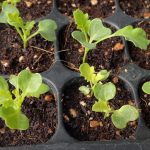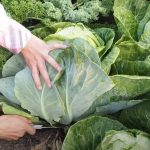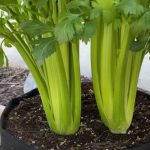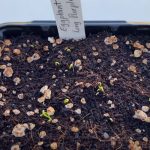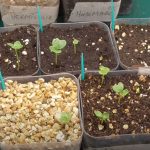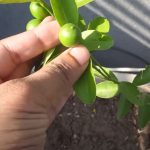Are you craving some fresh tomato salad? Why don´t you grow your own batch and enjoy this tasty red fruit? I will show you how effortless it is growing tomatoes from seeds! Tomatoes are incredibly easy to plant and grow since gardeners can sow them indoors or outdoors, and they can start harvesting as soon as around55 to 85 days!
There is nothing easier than growing tomatoes. So check out my complete instruction and all the valuable tips for caring for your tomato crops!
Overview
Level of difficulty:Very easy
Nutrition:
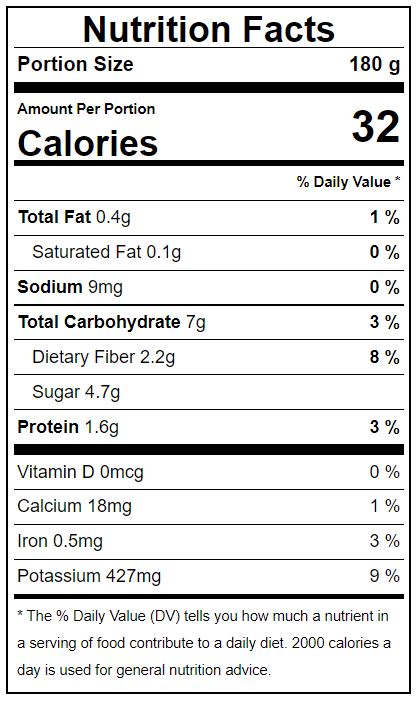
Nutrients in tomatoes
Height: 2 – 10ft
Time to fruit: Around 40-70 days, depending on the tomato variety of choice. But it can take up to 160 days.
Lifespan: Usually, tomato plants only live 8-10 months. Gardeners plant the crops in March or April to keep the temperature warm and not too hot. The produce will sprout fruits once and be ready for harvest from May to July. After harvest, the trees won’t fruit anymore and eventually die.
Of course, it’s possible to prolong the lifespan of a tomato tree. In ideal conditions, tomato plants can even live up to 5 years. However, the yields will deteriorate from the second harvest season. That’s why removing the plants after the first harvest season is better. Amend the soil, and prepare for sowing an entirely new crop.
Tips For Choosing Cultivars

Always buy fresh tomatoes from local farmers. The fruits are organically grown, so the seeds are healthy and aren’t contaminated with whatever chemicals companies and farms use for commercial production.
The most famous tomato varieties are:
- Sun Gold
- Cherry tomato
- Brandywine
- Roma tomato
- Plum tomato
- Creole tomato
- Beefsteak tomato
Preparation ForGrowing Tomatoes From Seeds
Here are all the tools you need to grow your own tomatoes:
- Loamy soil
- Compost
- Sieve, cup, and water to wash the seeds from the mucilage
- Fertilizer rich in phosphorous and potassium
- Big pots with drainage holes if you want to grow the tomatoes indoors
Planting Tomatoes Step-By-Step
Learn how easy it is growing tomatoes from seeds here!
Germination
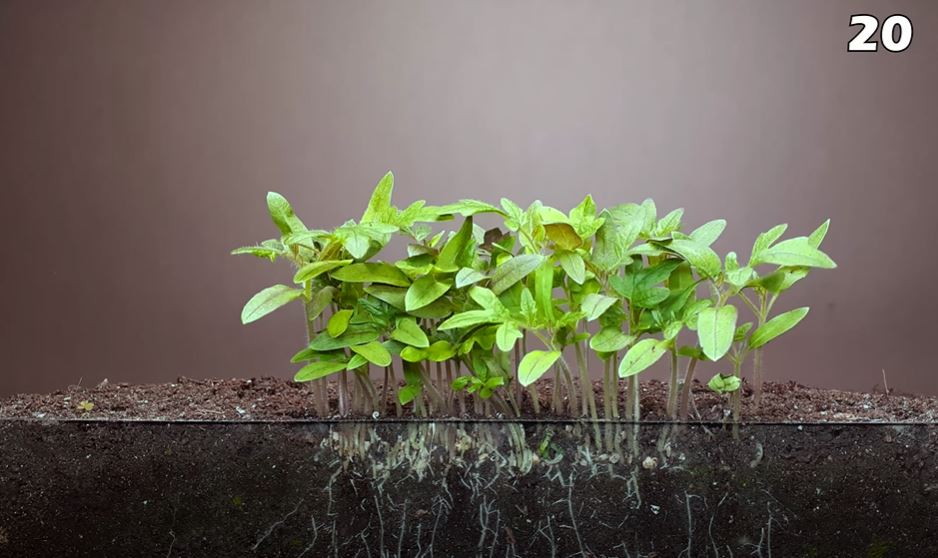
Attention!: Starting growing tomato from seeds by sowing directly in the soil is better than any other method. Some try to germinate the seeds using paper towels, but I don’t recommend it for this type of fruit/ vegetable due to how fragile and small the first shoot is. Despite the seeds being quite large, the starting stems are paper-thin. So don’t trust the size of the seeds for a big shoot!
- Step 1: Open the fresh tomato you prepared and remove the seeds from the placenta (the inner core of the tomato).
- Step 2: Put the seeds in a cup of water and stir without breaking the seeds. Remove the water and repeat until the seeds are bare without the slimy transparent layer around them. This step helps loosen up and partially remove the mucilage layer around the seed coats, making it easier for the cotyledon and the embryo to access oxygen.
- Step 3: Dry the seeds lightly by pressing them with a paper towel and set them aside.
- Step 4: Prepare your soil blend with loam soil and compost and set aside a small portion to cover the seeds later. Make sure that it’s well-drained. And if you want to grow tomato seeds in a pot, make sure that you punch holes under the container so that the water can escape.
- Step 5: Scatter the tomato seeds with moderate population density on top of the soil. You can germinate numerous seeds in a small pot or soil area. But after that, transplanting is inevitable when the seedlings are tough enough.
- Step 6: Cover the seeds with a thin layer of leftover soil. Don’t bury them too deep, and water them thoroughly. Daily watering is a must.
- Step 7: Wait for 5 days, and you should see seedlings appear. Depending on the cultivar, it only takes 10-20 days more for the seedlings to grow taller. Transplanting then is safe as the stems are strong enough.
Seedling
Tomato seedlings grow very fast, it takes only over 20 days, and gardeners can already move them from the germinating ground to their own pot or garden slot. Now, all the care for the seedlings involves watering and fungicide-spraying only. Regarding fungicide, spray the solution once weekly after 20 – 30 days post-germination.
Of course, you can start mixing fertilizer into the soil already after about 4-5 weeks, counting from when you sow the seeds. Just remember that there are 2 phases when new tomato trees absolutely need fertilizer to develop larger fruit with better flavor:
- Before the flowers bloom
- When the fruits are still green and small

Adult Plant: Flowering, Fruit Formation, And Mature Fruiting
Tomatoes start flowering after a few weeks, and it takes about 55-85 days for tomato trees to fully reach the mature fruiting phase, where the fruits are ripe enough for consumption. Since they are self-pollinating, we don’t have to manually transfer the pollen from the stamen to the stigma.
But they still need some more days to ripen on the vine to reach the best flavor and texture. Standard daily watering should be maintained throughout this period. Make sure that you water twice on hot days!
Harvest
After letting the tomatoes ripen on the vines, start harvesting them and using scissors to cut each tomato with its stem. This is the best way to harvest the red fruits since they are very soft and easily bruised. Ripening on the vine allows this species to get sweeter than off the vine.
Of course, if you are planting a large batch and are afraid of bugs getting to the ripe fruits before you, you can cut the entire vine when the fruits are half green and half ripe. Store them indoors so that they can keep maturing and get red entirely!
How To Care For Tomato Seedlings and Fruits
There are so many elements to keep an eye on when growing tomatoes. And what are they? Learn everything you need to know to plant a satisfying crop of tomatoes with shiny, red, and fat fruits!
Light
Tomatoes are quite easygoing in this aspect, as they can still grow without direct sunlight. But to help the fruits grow as large and sweet as possible, I highly recommend giving them at least 8 hours of direct sunlight daily if you grow them outdoors in a cool area with no intense sun. If not, providing artificial lamp light or indirect sunlight from a window sill daily for at least 6-8 hours should be considered.
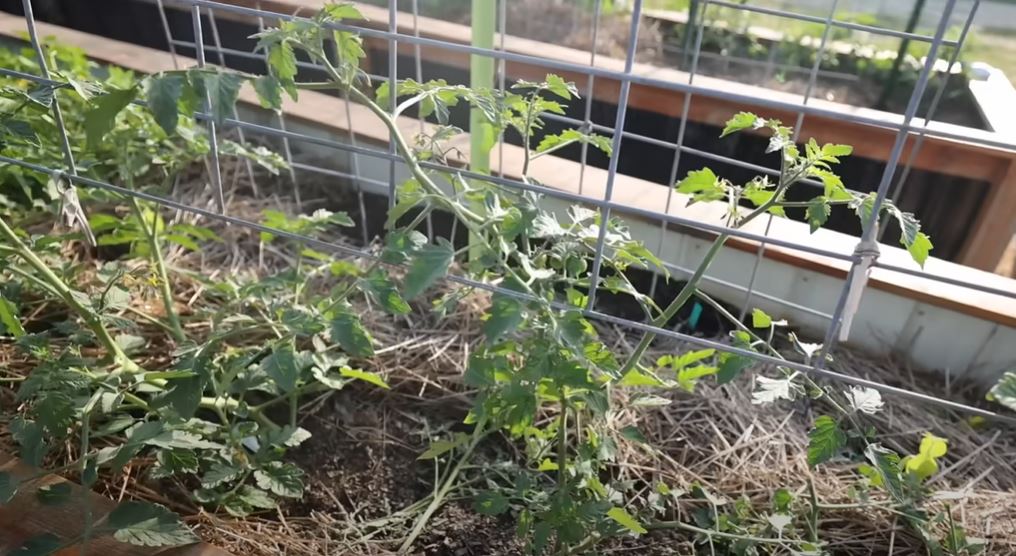
In case you live in a tropical climate with days where the roads feel like lava, it’s essential to provide both sunlight and shade to avoid sunstroke. Tomatoes tend to get sunscald and cracking skin during the early and mature fruiting phases.
So if the sun gets too intense in your area while your crops are ripening, provide shade with some old fabric, mesh plant shade, or other materials that still allow some sun to go through while impeding the intensity.
Temperature
Tomatoes thrive best in 55 to 85°F, so they prefer cool to warm weather. These fruits can’t withstand frosts and don’t love intense sun either, so provide them with safeguarding methods for optimum yield.
Humidity/ water
Tomatoes are water-loving species, and they need 1 daily watering on cool days. On hot days, we should water the crops twice in the early morning and late afternoon when the sun isn’t in beast mode.
On the other hand, overwatering has never been the answer. Check how the water sits on the soil while you water the plants, and stop whenever it seems moist enough. There shouldn’t be any water puddles after each session.
Oxygen
Yes, providing your tomato plants with lots of oxygen is necessary to avoid fungal development and create energy to boost growth.
How can we provide oxygen for the root system? It starts with the soil. During the first days, tomatoes don’t have a shoot to access oxygen, so it’s best to create suitable soil to promote access to oxygen. Mix a well-drained loamy soil blend with perlite for better water retention and ventilation. That will do the trick!
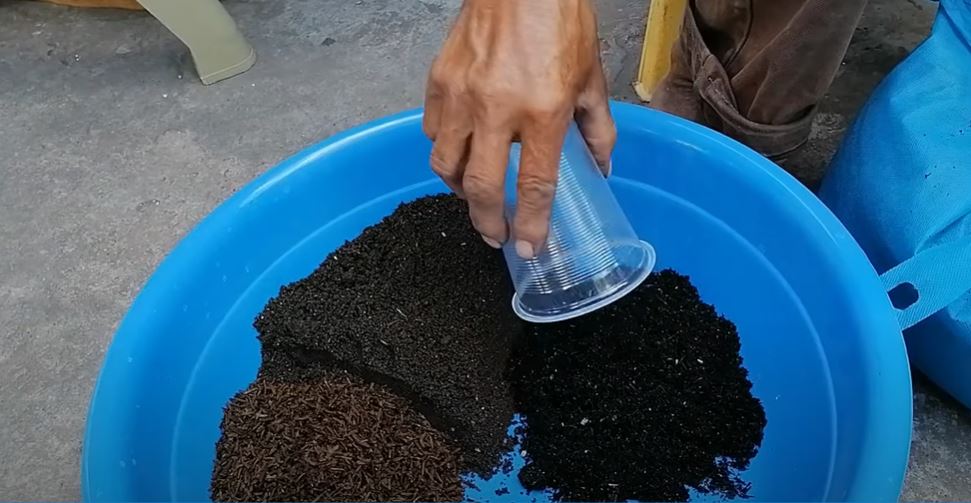
When the shoots break the soil surface and grow into leaves, they will get oxygen via photosynthesis to produce even more energy for tomatoes to grow. That said, keeping the soil quality well-drained and not overwatering is still necessary, which cuts off the oxygen to the root and may cause root rot.
Diseases
Fungal diseases are common if planters don’t take preventative methods or don’t observe the plants’ condition carefully enough. With that said, you should start using a fungicide for tomatoes when the shoots grow past 3-5 inches. Choose chlorothalonil as it has a low toxic level and can be applied to your crops once every week.
Adapting fungicide before any sign of fungal attack is recommendable since tomatoes are a single-season harvest. Average tomato plants don’t last more than 8-10 months, so make the most out of your crops by keeping the diseases at bay!
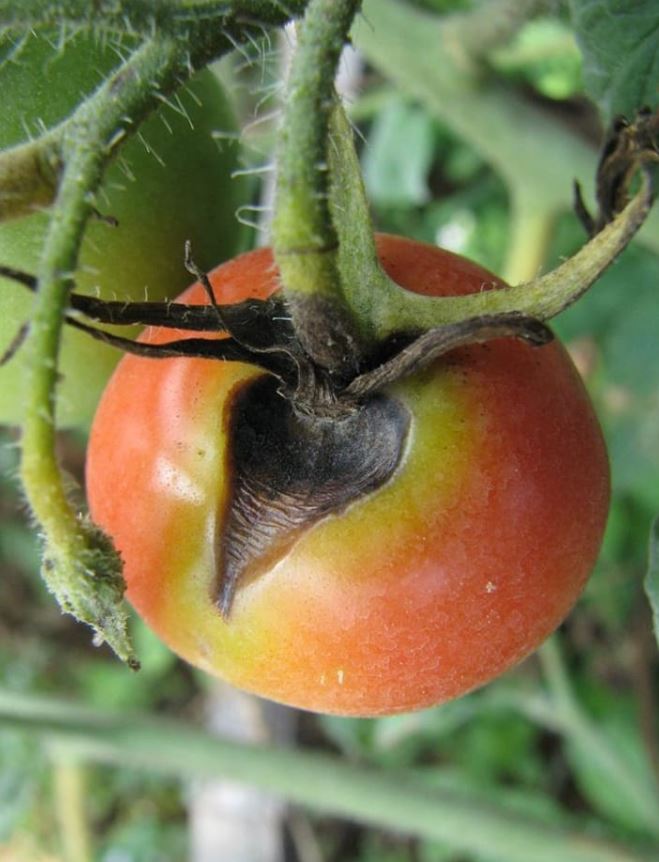
Fertilizer
You can mix well-finished compost into the soil of your crops to boost tomatoes’ growth without being afraid of burning the root due to excessive nutrients. With that said, tomatoes feed a lot of healthy components to enlarge the fruits, so using fertilizer will ensure more impressive yields.
The timing must be fortunate!
First thing first, you can apply potassium and phosphorous-rich fertilizers for tomatoes before the flower blooms, which means about 20-50 days after sowing, more or less, depending on the tomato hybrid that you choose. Try 1 pound of 6-24-24 or 8-32-16 fertilizers for every 100 square feet of garden.
After that, you can move on to the next fertilizing period when the tiny tomatoes already appear, which is about 40-70 days after germination. Keep an eye on their sizes because fertilizing when the tomatoes are already getting big won’t be as effective.
4Tips ForMaking Tomatoes Growing Easier
Check out these 4 tips if you want to facilitate your tomato growing experience!
It’s better to plant tomatoes outdoors than indoors
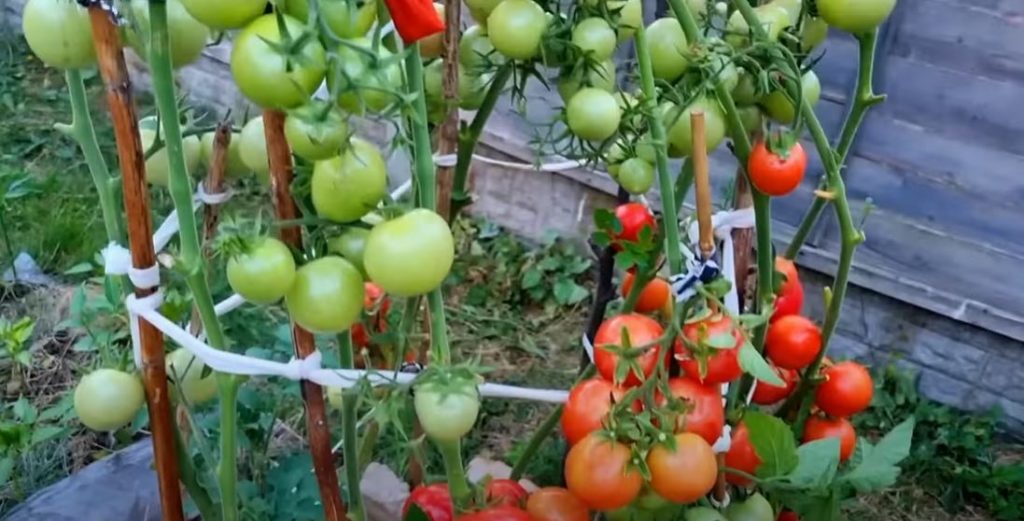
Since tomatoes favor direct sunlight more and need frequent watering, you can take advantage of the natural sunlight and rainy falls for your crops. That’s why it’s more convenient and favorable to plant them outside instead of indoors.
Of course, there are problematic aspects to this environment. More insects outdoors than indoors can threaten plants as they carry diseases and sometimes even fungi.
Don’t let cabbages and cauliflowers cohabit with tomatoes
Cabbages and cauliflowers love all the nutrients that are required for growing tomatoes. So, if you cooperate with them in the same land slot, the mentioned plants may stunt the growth of your tomato crops. Instead, you can grow spice herbs like basil, garlic, onions, chives, or asparagus.
Of course, make sure that you plant the tomato trees at least 1.5 feet from each other so there is enough space for more companions to cohabit.
Plant beefsteak tomatoes if you want to eat them raw
This fresh Spanish-origin tomato variety has a meaty texture and mild flavor. But that’s not its most significant advantage. Beefsteak tomatoes usually are huge! This makes them perfect natural bowls in which you can fill salad or tuna and have a bite directly. Enjoy the fun with different recipes!
It’s best to transplant tomatoes in the afternoon or evening
To avoid transplant shock, I suggest doing it in the afternoon or evening when the temperature has cooled off a bit, and the soil isn’t hot. On the other hand, doing it on cool and cloudy days will allow gardeners to start with the task earlier.
When is it too late to transplant tomatoes? If you sow the seeds far away from each other, the answer is never. But if you germinate them densely, I suggest transplanting the seedlings after about 20 days in the soil after germination when the stems are more rigid.
